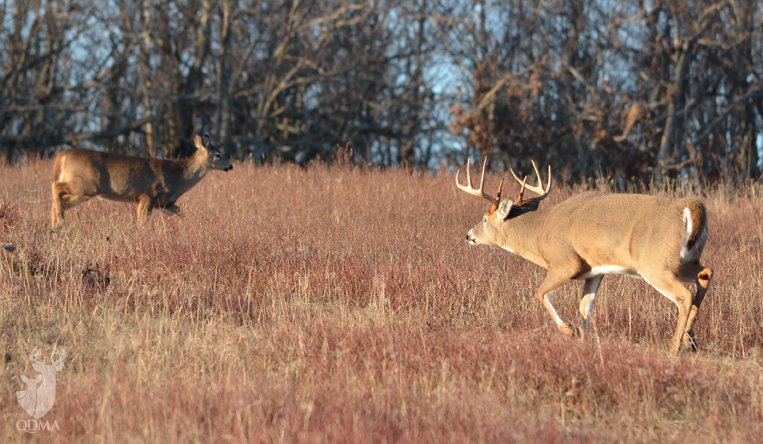When November arrives, everyone is on the lookout for that big buck. However, it’s easy to overlook the main factor controlling buck movements in November – does. As the rut kicks in, bucks will be criss-crossing their home ranges to dial in on does, and if you find and pattern does too, you’ll find the bucks. Here are several tips on how and where to begin looking for does so you can hunt bucks more effectively.
Bedding Areas
Just like bucks, does have home ranges, and within those home ranges they have “core areas” where they spend the greater portion of their time. In the fall, does are packing on fat for winter, so their core areas usually center around a combination of quality fall food sources and quality bedding cover. Acorns, standing corn, and cool-season food plots are the likely targets if available in your area, or scout to find the food sources does are focusing on in November where you hunt. Then determine the nearest quality bedding cover. You’re now in the right general area. You may also know the best combination of food and cover from past experiences. Remember that pocket of timber or thicket that you always kick does out of in fall? Once you have pinpointed concentrated doe activity, you will have a better idea of where to find the bucks.
Mornings
In the early mornings, does will be feeding and then heading back into the bedding areas. Sit a stand between a food source and a bedding area, as I believe that is where bucks usually try to cut a doe’s trail. For morning hunts, I like to hunt the stands closer to the bedding areas, as bucks will cruise these routes throughout the morning. Hunting these travel routes between food and bed should provide you with plenty of buck sightings.
Mid-day
During the middle of the day, I have found does often get up out of their bedding areas to wander and browse between areas of bedding cover, but they seem to make short-distance trips. To find bucks looking for does in the middle of the day, I set up between two known bedding areas. I have also learned that small waterholes in good cover can be great ambush points for a mid-day hunt, as both bucks and does will stop to rehydrate on warm fall days. An all-day or mid-day hunt works best on days leading up to the peak of the rut, since bucks will keep checking for hot does all day.
Evenings
As the sun begins to set, does will fill fields and food plots, trying to pack on the pounds before the cold of winter, and bucks won’t be far behind. Set up a stand along major deer trails leading to these prime food sources. Old bucks are often hesitant to step out into the open during daylight, so setting a stand 20 yards or more off the field edge inside the timber may be the perfect ambush.
Escape Cover
Once the bucks are in full-rut mode and the most serious chasing begins, start to look for does in more secluded, thicker cover. By this time, the does have been harassed by every passing buck, and they seek out the thicker cover in an apparent attempt to lose any unwanted pursuing bucks. The mature bucks seem to have learned this trick because they will also be seen cruising these areas. We usually think of “escape cover” as something deer use to escape predators, but in this case does use it to escape bucks. This kind of escape cover includes dense stands of native grass, grown-up clearcuts, or any extremely dense vegetation where does can get out of sight quickly. Look for this kind of cover near the doe “core areas” you previously identified, and set up your stand site along travel corridors connecting the areas.
Fool the Doe First
This November, think of does first to bag your big buck. However, remember while hunting bucks near doe groups, you will need to plan on fooling the does before the bucks even reach your shooting lanes. Now is the time to be extra careful with your scent and wind direction. The bucks may be love struck, but you can guarantee those wise old does are on high alert. You’ll also want to get ready to shoot when you see any deer approaching, as a good buck could be trailing behind any one of the does. Good luck!
